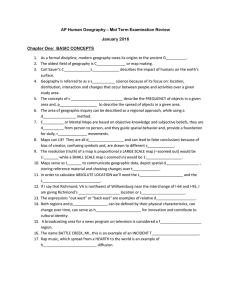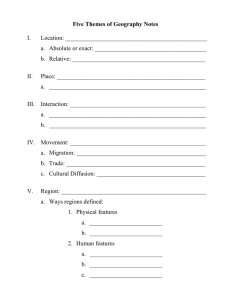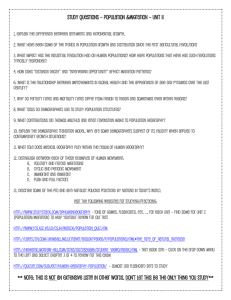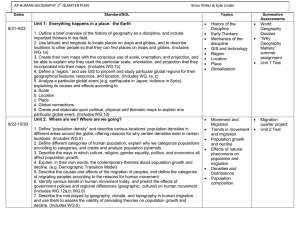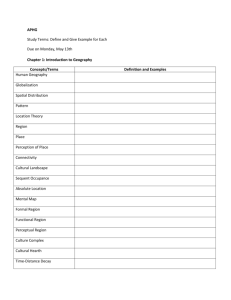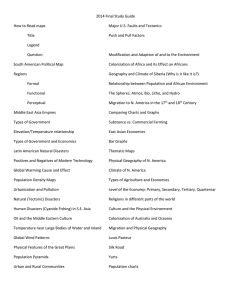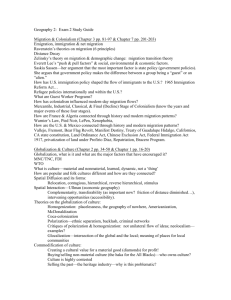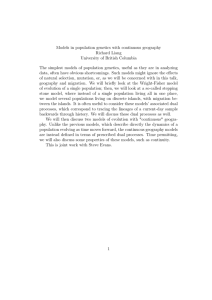GEOGRAPHY 111 MIDTERM I STUDY GUIDE understand
advertisement
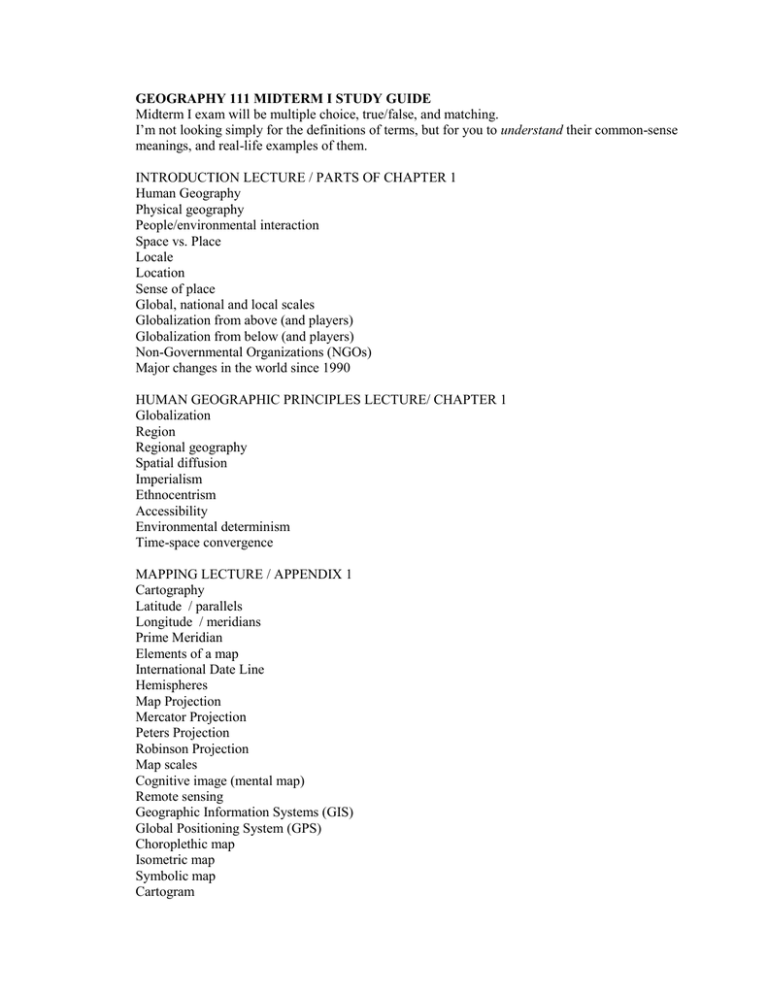
GEOGRAPHY 111 MIDTERM I STUDY GUIDE Midterm I exam will be multiple choice, true/false, and matching. I’m not looking simply for the definitions of terms, but for you to understand their common-sense meanings, and real-life examples of them. INTRODUCTION LECTURE / PARTS OF CHAPTER 1 Human Geography Physical geography People/environmental interaction Space vs. Place Locale Location Sense of place Global, national and local scales Globalization from above (and players) Globalization from below (and players) Non-Governmental Organizations (NGOs) Major changes in the world since 1990 HUMAN GEOGRAPHIC PRINCIPLES LECTURE/ CHAPTER 1 Globalization Region Regional geography Spatial diffusion Imperialism Ethnocentrism Accessibility Environmental determinism Time-space convergence MAPPING LECTURE / APPENDIX 1 Cartography Latitude / parallels Longitude / meridians Prime Meridian Elements of a map International Date Line Hemispheres Map Projection Mercator Projection Peters Projection Robinson Projection Map scales Cognitive image (mental map) Remote sensing Geographic Information Systems (GIS) Global Positioning System (GPS) Choroplethic map Isometric map Symbolic map Cartogram WORLD SYSTEMS LECTURE/ CHAPTER 2 World-system Core Semi-periphery Periphery Colonialism Technological innovations Indirect political rule Sphere of influence Decolonization Neocolonialism Hegemony Reasons for European hegemony Industrial Revolution and its diffusion Why World War II changed world Cold War effects on Periphery Subsidiaries First World Second World Third World World Village (not numbers, but relate general ownership) Tripolar Economy New International Division of Labor Four Tigers Digital Divide Fast vs Slow World GLOBAL ASSEMBLY LINE/ LIFE AND DEBT / FREE TRADE FIX / CHAPTER 7 Transnational or multinational corporations World Bank International Monetary Fund (IMF) World Trade Organization Maquiladora Export Processing Zone (EPZ) (Reasons: Lower wages, lower taxes, weaker environmental/health laws, less union organizing) Workers’ Rights Consortium / college apparel National debt and “servicing” the debt Structural adjustment policies (austerity measures) and possible negative effects: *Privatizing government-owned services (price rises,) *Devaluation of local currency to enable more exports. (less purchase ability) *Opening up market to cheap imports from Core (product dumping) *Limit government social spending (layoffs of state workers, health/education cutbacks) ECONOMIC GEOGRAPHY/ CHAPTER 7 (Think in terms of common-sense examples) Economic geography Per capita Gross Domestic Product (GDP) Economic agents Results of “austerity measures” North American Free Trade Agreement (NAFTA) Zapatistas in Mexico Primary activities Secondary activities Tertiary activities Quaternary activities Principles of location Resource dependency Resource cartel Agglomeration Agglomeration diseconomies Deindustrialization Rust Belt / “runaway shops” Sunbelt Meaning of “Made in the USA” Developmentalism and problems with concept “Race to the bottom” Alternatives for Periphery : (Skills sharing, market protection, Microlending, Unions, Keep resource profits, Debt forgiveness, Debt-for-nature swap) DEMOGRAPHICS LECTURE / CHAPTER 3 I Demographics Population density Population distribution Ascribed characteristics Achieved characteristics Census Rate of Natural Increase National population (four factors) Doubling Time Infant mortality rate Life expectancy rate Dependency ratio Graying of the Core Baby Boom Population (age-sex) Pyramids (recognize Core vs. Periphery, men / women, old /middle/young) Cohort Demographic Transition Reasons periphery parents have kids Core responsibility for population growth Policies to lower birth rate (forced, voluntary, social) MIGRATION LECTURE / TAKING ROOTS VIDEO/ CHAPTER 3 II Emigration Immigration Voluntary migration Refugees/ Forced migration Internal refugees Asylum Undocumented workers Push factors Pull factors Intervening obstacles Gross migration Net migration Chain migration Brain drain Guest workers Ethnic cleansing Indian removals Anti-immigrant arguments Rebuttals to anti-immigrant arguments Why Cubans/Vietnamese admitted instead of Haitians/Central Americans Types of internal migration in U.S. Great Migration (African Americans from South) Wisconsin ethnic groups: Germans, Scandinavians, Poles, Latinos, Hmong CULTURAL IDENTITY will be covered in the 2nd Midterm
